Genre: Beat-‘Em-Up Developer: Taito Publisher: Taito Players: 1-2 Released: 1993
Beat-’em-ups have historically been a slam dunk genre for gaming companies. All human beings have a universal need to burn off their extra energy and stress through their imagination, usually in ways that they can’t do in reality. There is no better way to indulge that fantasy than punching, kicking, and jump-kicking through legions of virtual aliens, ninjas, and robots. It would seem that a game like The Ninja Warriors would be a perfect tool for this kind of stress relief, since it contains all of these ingredients. Unfortunately, Taito found a way to make beating up ninjas an absolute chore.
The Ninja Warriors was originally released for the arcades in 1988 and had followed a similarly ridiculous plot as many of its contemporaries. Cyborg ninjas are sent by a rebel group to assassinate a dictator that controls the police and criminal underworld. The original arcade version of The Ninja Warriors had the unique feature of being played on three screens horizontally. Being able to see your enemies coming from both directions in advance was helpful in a shooter like Darius, (which was released in the same format that year) but fairly distracting for a beat-’em-up. This 1993 Mega CD port, released exclusively in Japan, chops off the extra video on the sides and gives it some letterboxing. This solves the constant head turning and misdirection that the player suffers playing the arcade game. There is an intro which briefly describes the plot with English text and voice. The title screen also gives the choice between the arranged and original soundtrack and different control schemes.
The graphics aren’t that bad compared to the arcade version. The post-modern urban warfare theme is still well represented, even with the reduced scope and colors. Everything looks fairly crisp, and the backgrounds utilize some parallax scrolling. The music, especially the arranged version, is quite good and sounds great in stereo on your speaker system. This release seems to be centered on the previously mentioned arranged soundtrack. The intro screen also gives the option to watch something called Zuntata, which is in reference to Taito’s in-house music team. This is also voiced in English (with Japanese subtitles) and shows a series of still photos which expands a little more on the plot and incorporates the members of Zuntata playing the theme song. Their bizarre J-Pop meets middle-age appearance is a pure Japanese oddity but the musicianship and talent are definitely there.
The main problem with the game is that it just isn’t fun. Movement is only in a straight line, except for the occasional ascent up some stairs. There are no power-ups and there are only a small variety of enemies to fight. You destroy enemies by using your short knife or throwing weaker shurikens, the latter of which are replenished only after the loss of life or at the completion of a level. The only special move is by pressing the jump, attack, and direction button simultaneously and results in aerial invincibility, ending as soon as you land. The game has a similar feel to the earlier beat-’em-up, Kung-Fu Master by Irem, except that here the stages are longer and more laborious to traverse. This repetitiveness gets boring very quickly when it seems you are only battling different colored versions of yourself.
Why Taito decided to port a five-year-old arcade game to the Sega CD is not known. It seems like the company decided to develop all the games that were either too advanced for Sega’s systems, like Night Striker, or were mediocre and unpopular like The Ninja Warriors. The Japanese’s tepid response to this version shows that it would have been a mistake to release it in the United States, even with the English voices.
If you want some great side-scrolling action, the Sega CD already has Final Fight and Streets of Rage/Shinobi on the Arcade Classics disc. If you can purchase this game inexpensively as an import it might be worth a play-through or two, if only for the music and to see a band of economics professors that decided to dress glam and play rock and roll.
SCORE: 4 out of 10

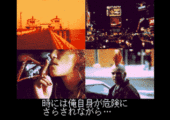
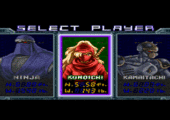
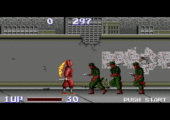
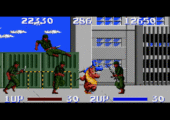
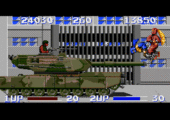
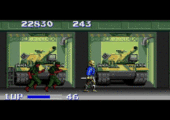
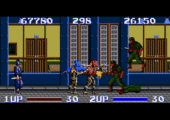
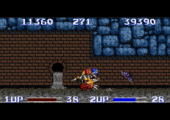
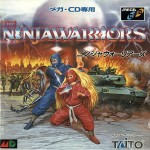
I’ve always been curious about this game, as I have the SNES cart (which is a remake by Natsume) and find it fun. It might be worth mentioning that Taito followed up the original Ninja Warriors game with Thunderfox a couple years later, which is very similar. I have played Thunderfox on Genesis and on a PS2 arcade compilation and it is quite good.